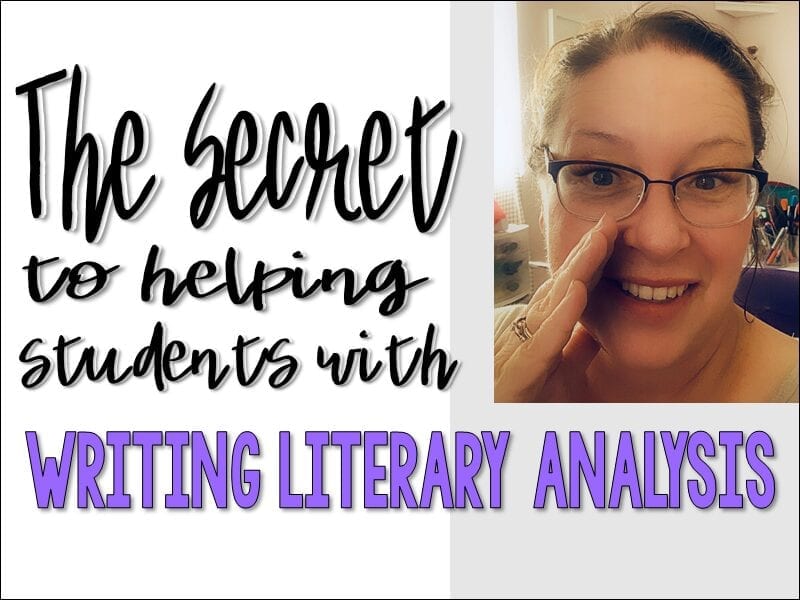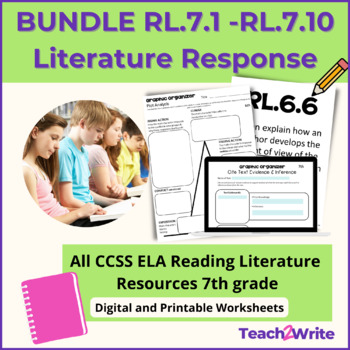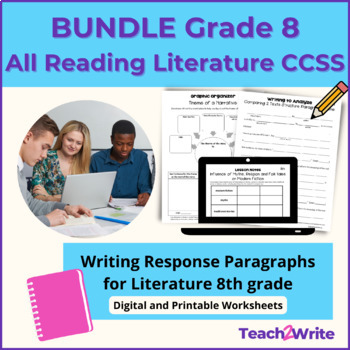Writing literary analysis is one of the most difficult writing tasks to teach. You work so hard helping students writing essays in your English language arts class. You teach them to read and annotate the text, analyze the questions they are supposed to answer, and yet, the written responses from the majority of your students is often below standard for their grade level. These are bright students. Why aren’t they getting it? Why can’t they write a literary analysis?
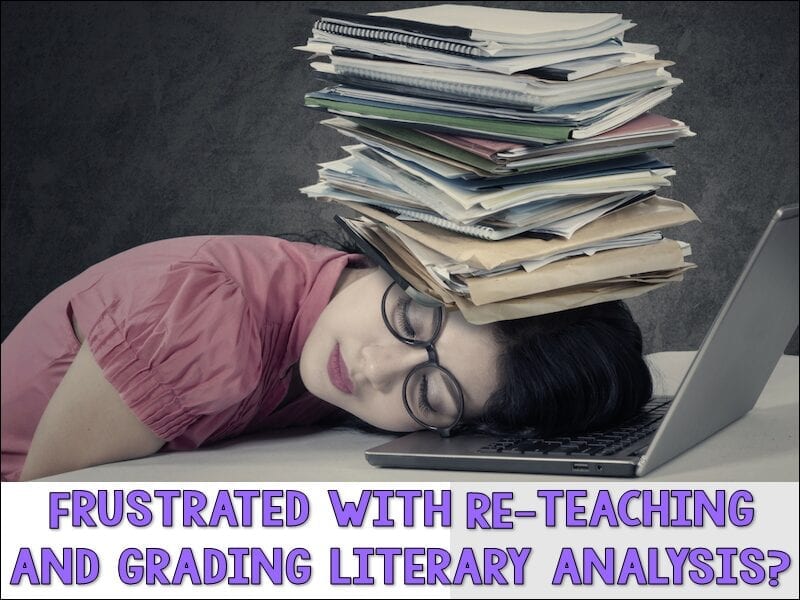
So, you try giving them graphic organizers and transition words. You try teaching them the PEEL, ACE or RACE methods, but those fall short when you ask students to compare/contrast or discuss the plot and character change. Students often paraphrase the cited text instead of explaining it in any depth. They need a different approach to learning how to write literary analysis.
Then, there’s all the grading and reteaching and revising…

A true story about one of my students
A student of mine who excelled at creative writing failed an essay that all of my students had worked on for weeks. I had taught the texts to our class, and we annotated them. This student used her graphic organizer for writing an essay, but when it came to writing the actual essay, she didn’t even cite text evidence! She gave her own personal experiences and opinions about the topic, but no analysis of the texts.
I had to go back and reteach her, and she had to go back and revise a week’s worth of work. Needless to say, she was not happy about it. She resented me for it, even though I was trying to help her. She was not the only student in the room, either. There were many others who were disappointed in their essay scores. There were many who did well on this particular essay, too. Why did so many of my students misunderstand, while others excelled? How can I help these other students to understand, too?
This all happened several years ago…before I started to teach academic writing, especially for literary analysis in a different way.
So, how did this all change for my students and me? What’s the big secret I mentioned in this blog post title?
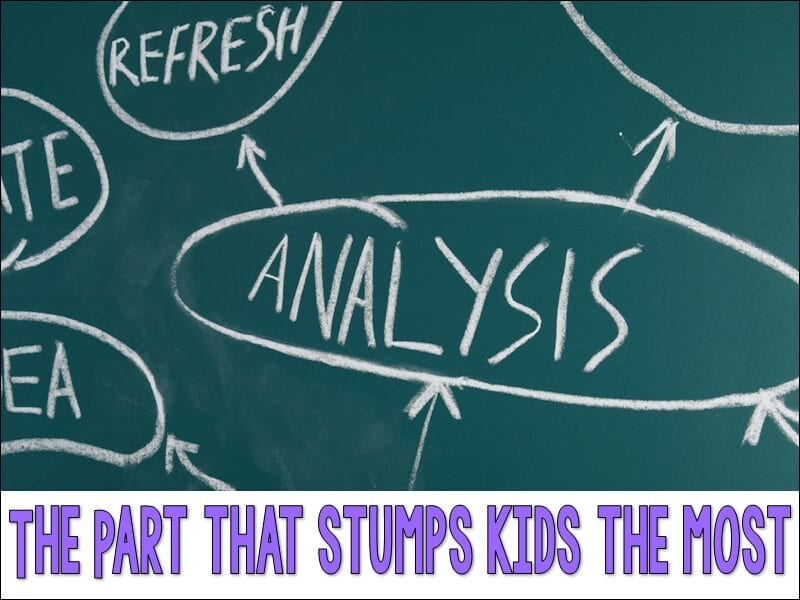
The part that stumps kids when writing literary analysis
From my experience, one thing that stumps kids is writing an analysis. Kids can analyze things from a very young age. I remember watching my son analyzing his toys when he was about six months old. I’d give him a toy and he’d hold it and just study it. He would turn it this way and that in his tiny hands, feeling its texture, looking at its bright colors, and then he would taste it and sink his teeth into it. He did this with every toy I gave him. (Yes, I had to be very careful not to give him toys that had small breakable parts on it.) Anyway, the point is that kids do know how to analyze. They’ve been analyzing things from before they could actually talk. They just don’t realize what it is that they are doing.
Now, I start teaching my students the concept of analysis at the very beginning of every school year.
First, I explicitly teach the concept of analysis. Then, I give students an object or project a picture on the board. I have them tell me all the qualities that make up that object. Then, I show them a graphic organizer to record those qualities. Next, they describe their object in writing. Usually, most of them can do this pretty well. They’ve learned how to do this in elementary school. The next part is in the transference from writing an analysis of an object to writing an analysis of a literary text.
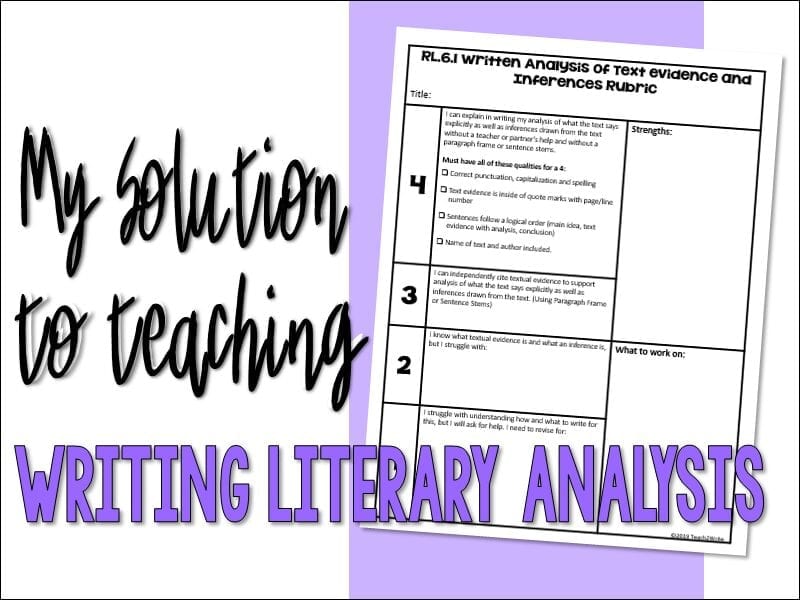
My solution to teaching how to write a literary analysis
My secret is to explicitly teach analysis of each reading standard and give students time to practice that standard over and over again before moving on to another standard. This allows me to:
- Hyperfocus on one reading standard at a time for literature, using different texts.
- Teach academic writing to students in short paragraphs, not long essays.
- Grade on the spot as they’re working and as I confer with them.
- Use standards rubrics to assess how well students understood each standard and how it applied to the literary text
If you already teach one standard at a time, wait…there’s more to my special secret recipe.

Repetition, Repetition, Repetition
I then repeat this process with other texts until students understand how to write the analytical paragraphs for that standard independently. This might be 3-4 times. Also, we revisit the standards previously covered to make sure students still remember how to analyze those characteristics of the text.
Another secret- sometimes we use the same text for all of the practice before we move on to the next standard! Of course, that also depends upon the standard and the length of the text.
For example, if we read a short story, like “The Ravine” or “The Tell-Tale Heart,” and students are citing text evidence and making inferences, they might practice 4 different times before we move on to the next standard or text. However, if we were studying plot and character change, we would need to read multiple texts for writing those practice paragraphs.
Did this solution work?
Yes, over and over again. Once I implemented this plan in my interactive notebooks, it worked. Students learned how to write academically for all types of literary analyses, from characterization to compare and contrast. Students began to see the patterns in the texts they were reading and writing. They learned text structures and how to use transition words. They finally learned what I meant by “explain the text evidence.” More importantly, their improved scores from the Florida Standards Assessment reading test also reflected this practice.
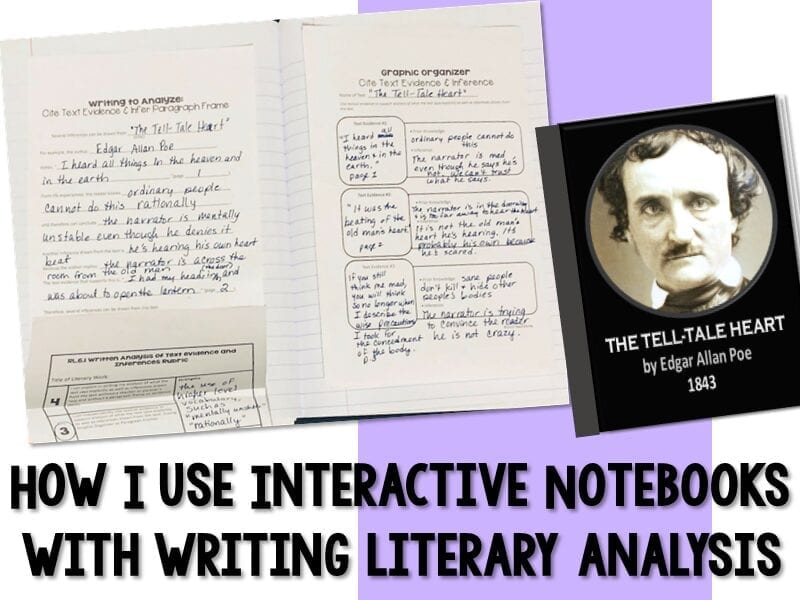
How I use literary analysis with Interactive Notebooks
In my class, my students use their composition books as interactive notebooks. After distributing the writing analysis handouts to students, they glue or tape them inside their notebooks. They can keep everything in chronological order and nothing is crumpled half-completed at the bottom of their backpacks. I could do a whole blog post about how I do interactive notebooks. I love them!
Generally, after students have read a piece of literature (or we’ve read it together), they write a brief reaction to it on the left-hand page. On the right-hand page, I give them the academic vocabulary for the standard.
The next left-hand page would be their paragraph and the next right-hand page would be their graphic organizer. If they have to revise their paragraphs, they write it on the next left-hand page.
The great thing about using interactive notebooks in writing literary analysis is that students have a working portfolio of all of their work and notes to refer back to and reflect upon throughout the school year.
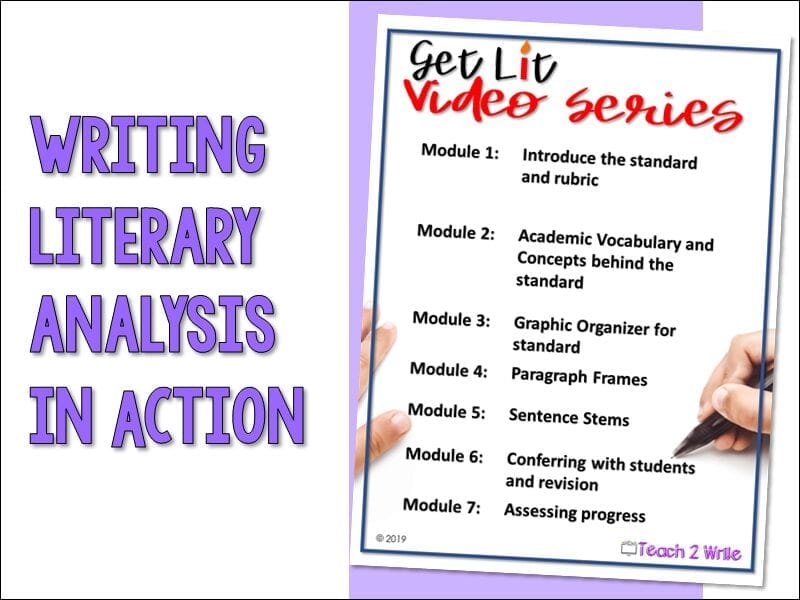
Writing Literary Analysis in Action:
Although I’ve shown you pictures of my secret plan above, you can get a more in-depth look at and explanation of how I teach writing literary analysis. Click here to Get Lit: How to improve academic writing in 7 steps in my FREE 3-part video series. This series will explain how I teach literary analysis step-by-step. I give you information about what to do, why I use these strategies, and ideas for use in your classroom. Also included are video notes with the Reading Literature Cite Text Evidence handouts I use for 6-8 grades for each academic writing step. These can help you can get started with your students right away.
If you are interested in purchasing the resources that are pictured in this blog post and in the Get Lit video series, click on the grade level you need below:

